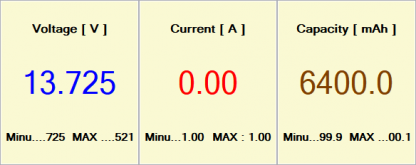Two things:
1) When there are no cells in parallel, IR doesn't matter. IR cannot be the cause of "runner" cells. Previous statements in this thread to that effect are false. The only thing that can cause a runner in such a case is difference in capacity.
2) With respect to resting voltages, are we comparing apples to apples? There's resting open-circuit voltage and resting "connected" voltage. And by open circuit, I mean literally not connected to anything, not even a BMS. 3.55 is what I've seen for open-circuit resting voltage. 3.35-ish is what I've seen for connected resting voltage (can take hours to get there, depending of course on your capacity)
1) When there are no cells in parallel, IR doesn't matter. IR cannot be the cause of "runner" cells. Previous statements in this thread to that effect are false. The only thing that can cause a runner in such a case is difference in capacity.
2) With respect to resting voltages, are we comparing apples to apples? There's resting open-circuit voltage and resting "connected" voltage. And by open circuit, I mean literally not connected to anything, not even a BMS. 3.55 is what I've seen for open-circuit resting voltage. 3.35-ish is what I've seen for connected resting voltage (can take hours to get there, depending of course on your capacity)





